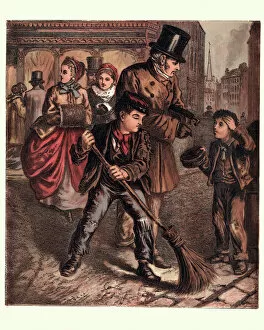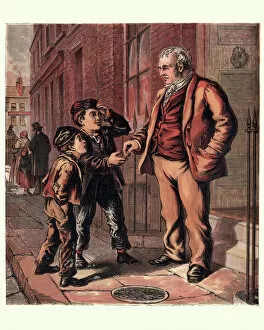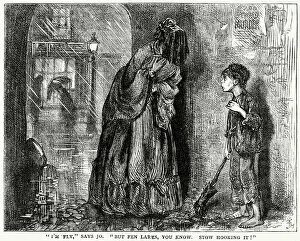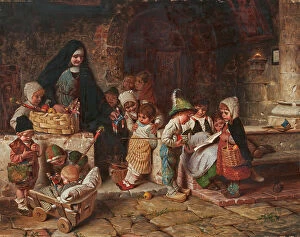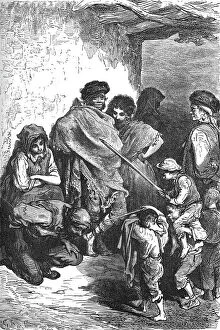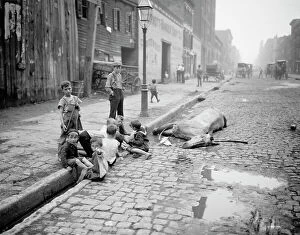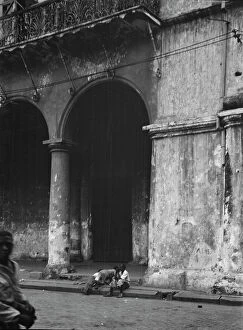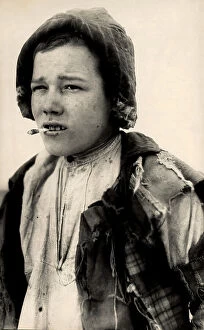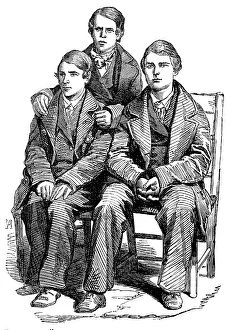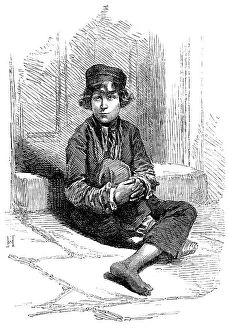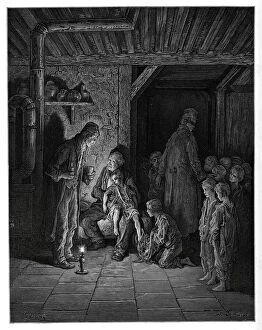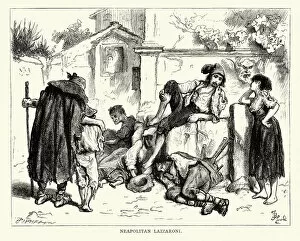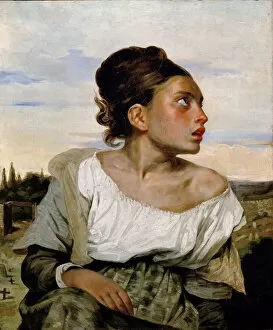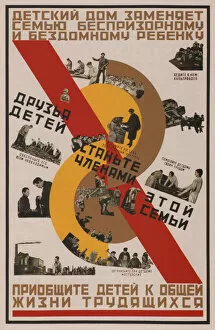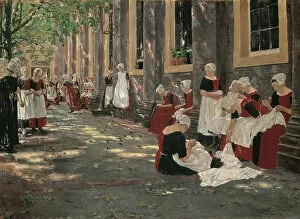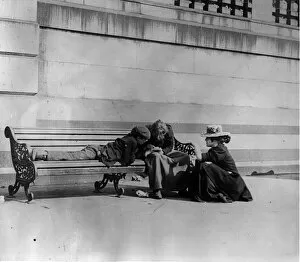Street Child Collection
In the heart of Victorian London, amidst the bustling streets and towering buildings, young boys found themselves trapped in a world of hardship
For sale as Licensed Images
Choose your image, Select your licence and Download the media
In the heart of Victorian London, amidst the bustling streets and towering buildings, young boys found themselves trapped in a world of hardship. With tattered clothes and weary eyes, they resorted to begging and sweeping the streets just to survive. The year was 1870, a time when poverty gripped the city like an iron fist. One image captures this bleak reality perfectly - a lone orphan boy standing on a desolate street corner, his outstretched hand pleading for mercy. It's as if he stepped right out of Charles Dickens' masterpiece "Bleak House, " where destitution was rampant and hope seemed elusive. Another snapshot from that era takes us to Dudley Street in Seven Dials. Here, children roamed aimlessly through narrow alleys, their innocent faces etched with sorrow. They were the forgotten ones - abandoned by society yet resilient in their struggle for survival. But Victorian London wasn't alone in witnessing such heartbreaking scenes; across Europe, cities harbored their own tales of despair. In Naples, the Lazzaroni children faced similar hardships as they navigated life on the unforgiving streets. Yet amongst these haunting images emerges one filled with tenderness - Eugene Delacroix's portrayal of a young orphan girl seeking solace within a cemetery's embrace. Her vulnerability juxtaposed against her surroundings serves as a poignant reminder of innocence lost too soon. Fast forward to 1926 when anonymous artists shed light on those responsible for homeless children - pointing fingers at societal failings rather than blaming these innocent souls who had been dealt an unfair hand in life. Simultaneously though, another artist depicted how children's homes could provide refuge akin to family bonds – offering hope amidst adversity. A glimmer of joy can be found within Max Liebermann's painting capturing free moments at Amsterdam Orphanage – laughter echoing through its walls as children experience fleeting moments of carefree bliss despite their circumstances.

